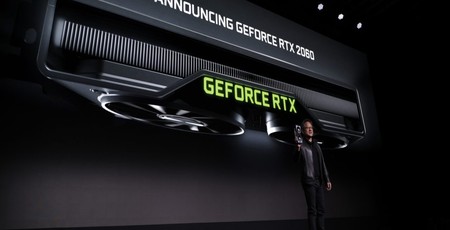Nvidia's dismal fourth quarter dims a barnstorming year
February 15, 2019 | 11:16
Companies: #nvidia

Nvidia has issued its final quarterly report for its 2019 financial year, and despite dropping its revenue by 24 percent year-on-year the company has boasted 21 percent full-year growth - and investors seem impressed.
Nvidia warned investors that its fourth quarter of its 2019 financial year wasn't exactly shaping up to be a barnstormer late last month, admitting that it was going to be around $500 million short of its original revenue projection owing to what founder and chief executive Jensen Huang called 'an extraordinary, unusually turbulent, and disappointing quarter' headlined by graphics card oversupply, problematical macroeconomic conditions in China, and lower-than-expected sales of the company's latest-generation Turing products.
Now, the company has confirmed its performance for the quarter, and as predicted it's tough reading: Nvidia's revenue, while an undeniably healthy $2.205 billion, was down 24 percent compared to the same quarter the year prior, and 31 percent sequentially. That had a knock-on effect elsewhere: Nvidia's gross margin dropped 720 basis points from 61.9 percent in the same period last year to 54.7 percent now, while its operating expenses jumped 25 percent. All in all, Nvidia's operating income for the quarter was down a whopping 73 percent compared to the same quarter last year - which Huang has understated as 'a turbulent close to what had been a great year', blaming 'the combination of post-crypto excess channel inventory and recent deteriorating end-market conditions'. Nvidia's Colette Kress also confirmed $128 million in inventory writedowns for the quarter on top of a 45 percent year-on-year revenue decline from the company's gaming division.
'Three factors contributed to the Q4 gaming revenue decline,' Kress told investors and media during the company's earnings call late last night. 'First, post-crypto inventory of GPUs in the channel caused us to reduce shipments in order to allow excess channel inventory to sell through. We expect channel inventory to normalise in Q1 in line with one- to two-quarter timeline we had outlined on our previous earnings call. Second, deteriorating macroeconomic conditions, particularly in China, impacted consumer demand for our GPUs. Third, sales of certain high end GPUs using our new Turing architecture, including the GeForce RTX 2080 and 2070, were lower than we expected for the launch of a new architecture. These products deliver a revolutionary leap in performance and innovation with real time ray-tracing and AI, but some customers may have delayed their purchase while waiting for lower price points or further demonstrations of the RTX technology and actual gains. The significant volatility in our gaming business over the last few quarters has been challenging to model.'
For the year as a whole, though, Nvidia's figures look considerably better: Despite a woeful final quarter, the company ended its 2019 financial year on $11.716 billion revenue for a 21 percent growth compared to 2018. Its gross margin went up 150 basis points from 60.2 percent to 61.7 percent, and while its operating expenses rose 27 percent so too did its income for a full-year net income growth of 34 percent.
It's news that has been welcomed by investors. After its January earnings warning saw its share price crash more than 14 percent, last night's earnings call has seen a 5.25 percent spike in post-market trading - on top of a 1.08 percent gain made prior to the announcement - helping the company to continue its approach to regaining its January high.

MSI MPG Velox 100R Chassis Review
October 14 2021 | 15:04








Want to comment? Please log in.